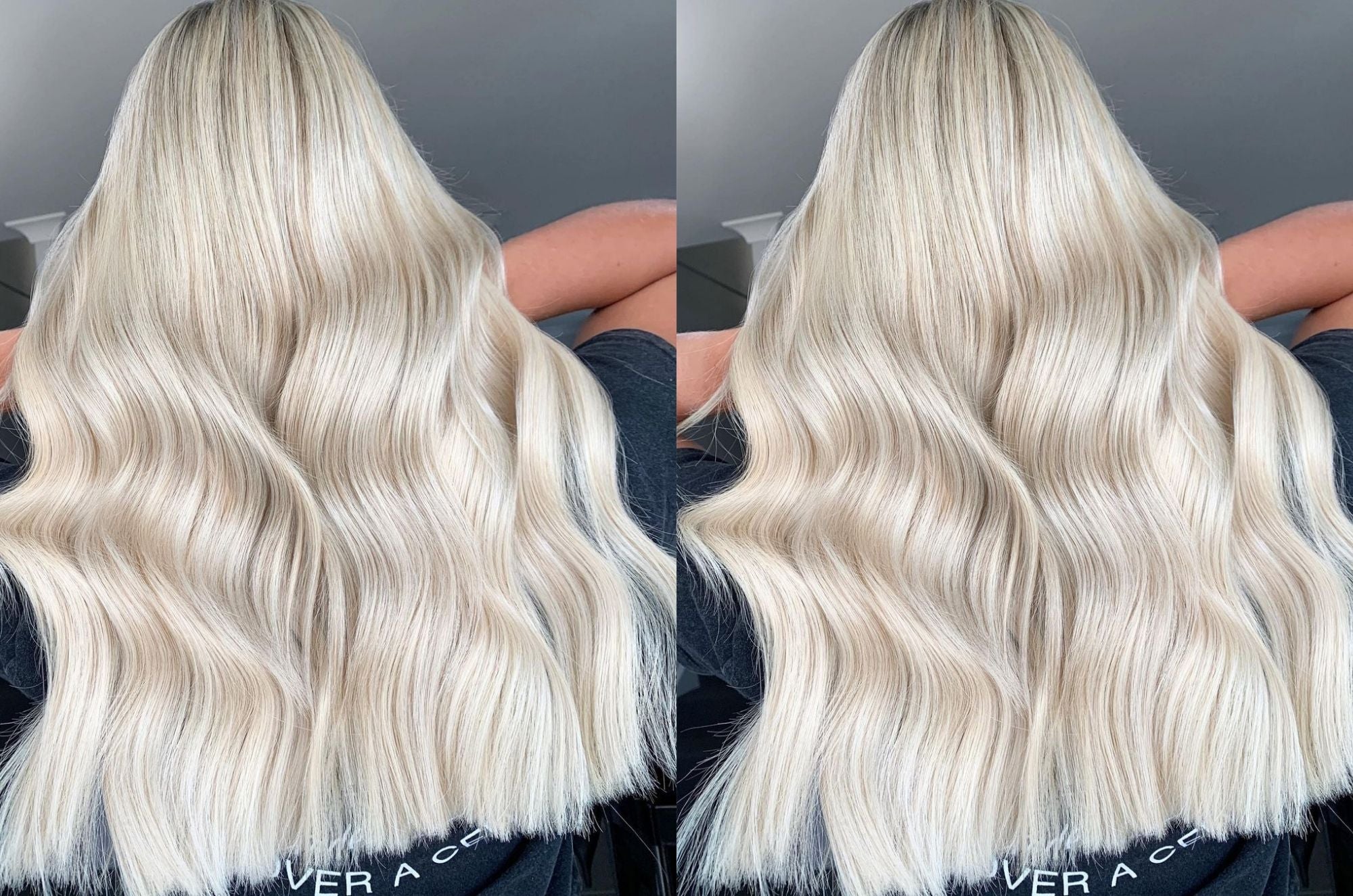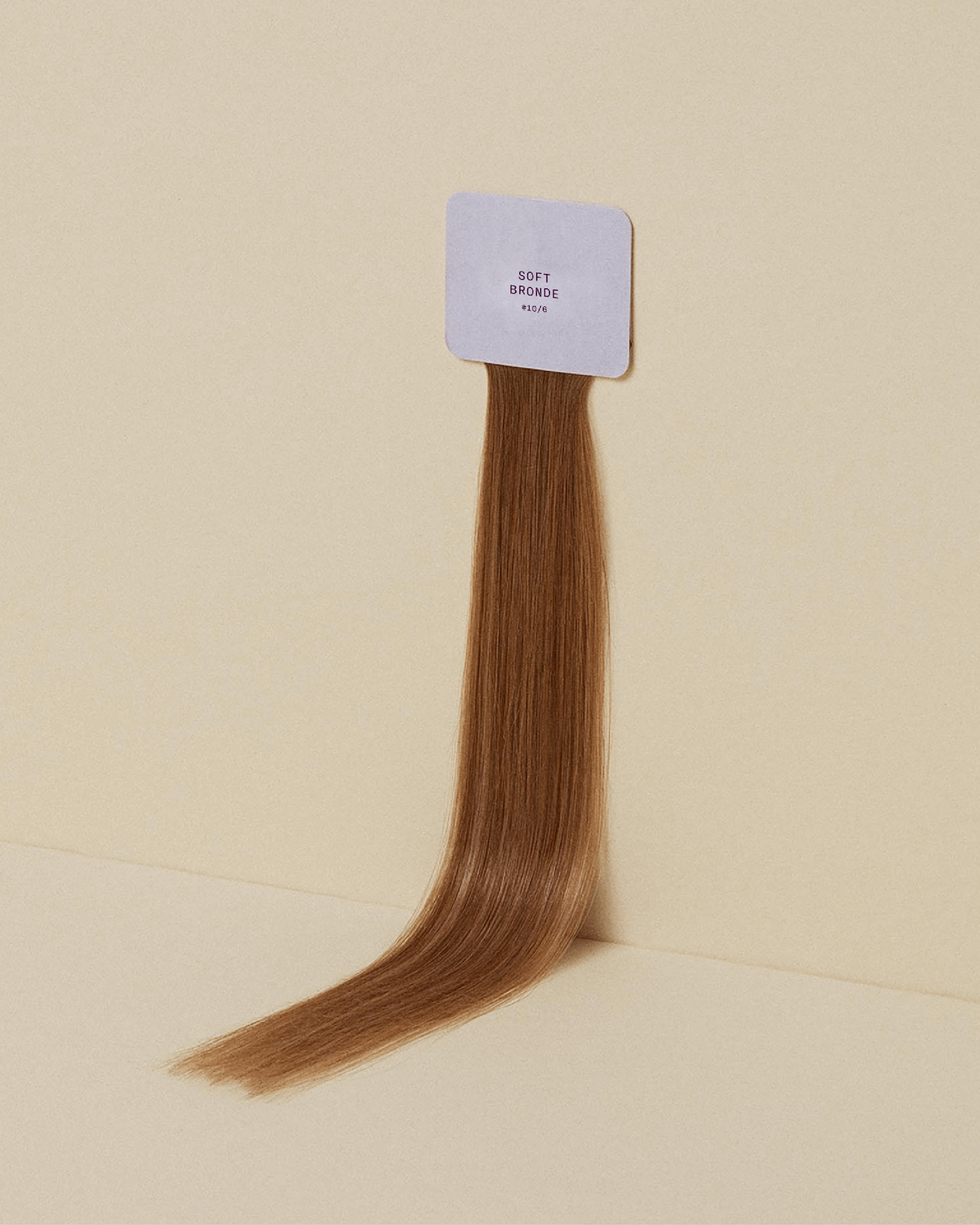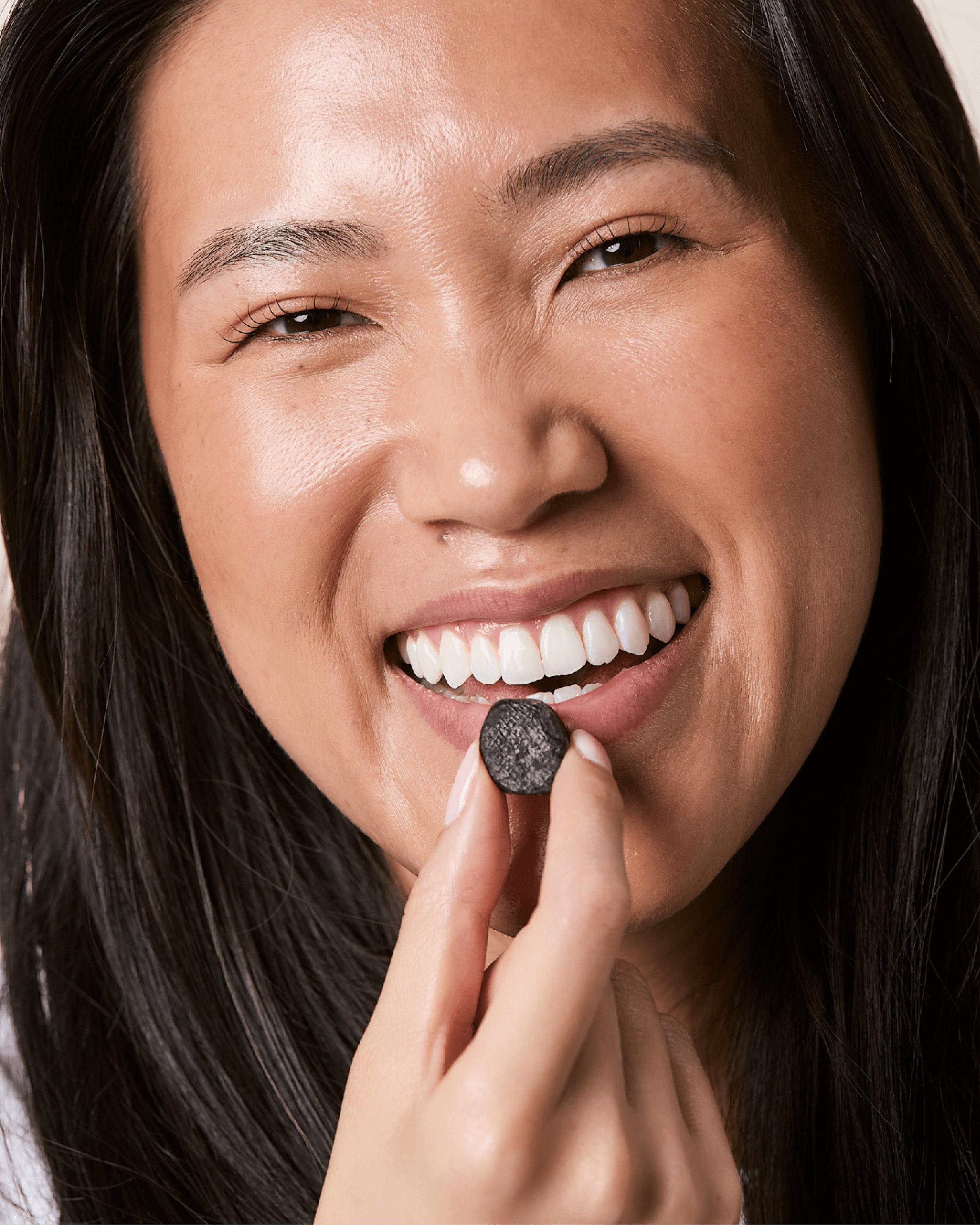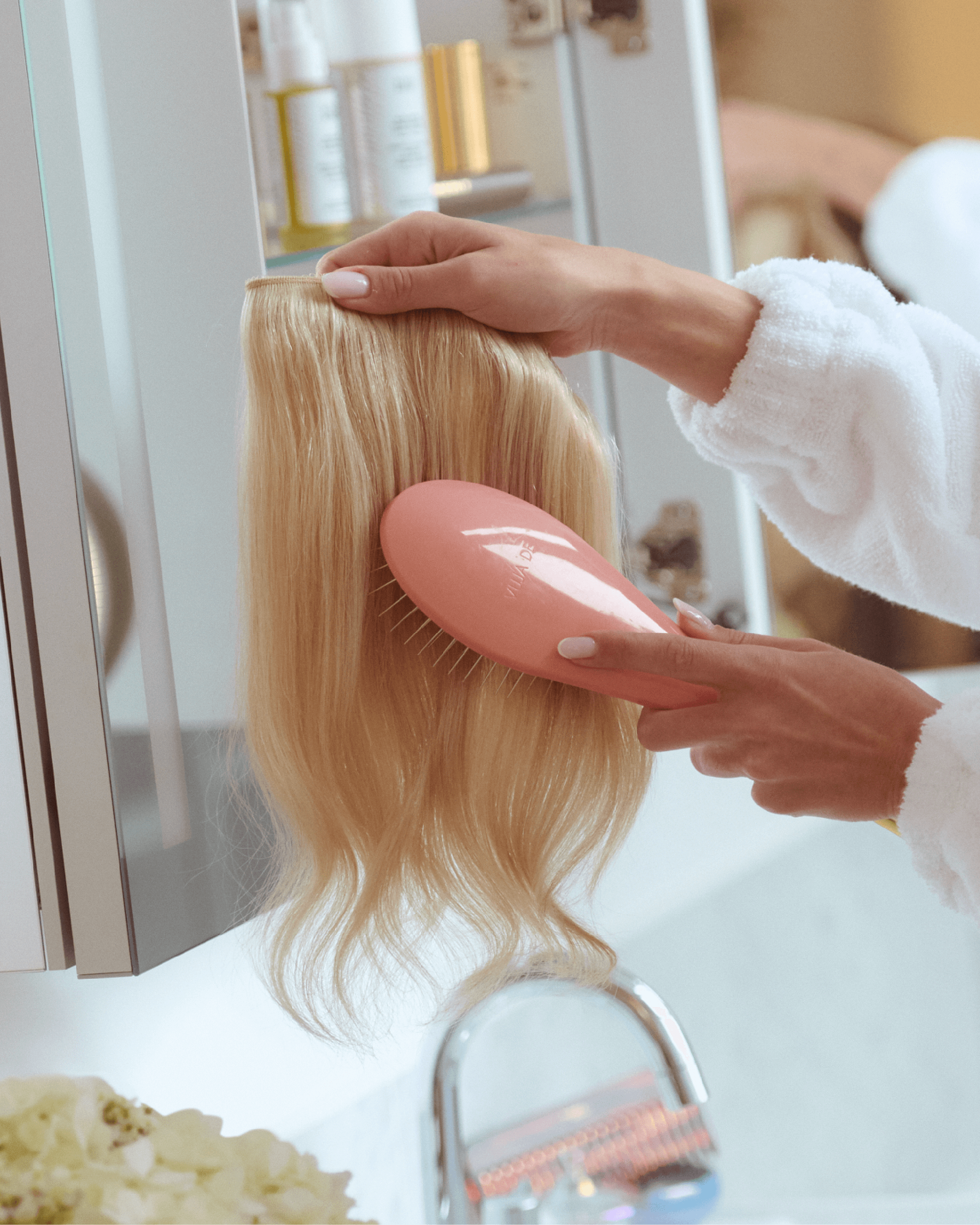In this article we'll cover how to treat excess sebum at home in just a few simple and practical steps.
Are you washing your hair every day yet still suffering from oily hair?
The answer to your hair drama could be sebum overproduction. This might sound complicated but it's actually super common. And highly treatable.
The best part is that you don't need to spend big bucks to get rid of excess sebum. In fact, you can treat your oily scalp at home with a few simple tricks.
First let's talk a little more about what sebum is and the causes of sebum overproduction.
What is sebum?
The sebaceous (oil glands) on your scalp produce sebum. Sebum is a naturally occurring oil that coats, moisturises and protects your hair and skin.
Sebum is produced all over the body. And it helps keep your hair growth cycle moving.
Most people think of sebum as a problem. But did you know it's actually essential for healthy hair growth? In fact without it, your scalp would be dry. And your hair would be brittle.
Just like champagne, cake and texts from your ex, too much of a good thing can quickly turn bad. And this is very true for scalp sebum too!
Read: Here's why your scalp is sore and feels like it's burning
What causes sebum overproduction?
Excess sebum can be caused by stress, environmental pollutants, product build-up, genetics and hormones. Among other things.
One of the most common causes of excess sebum is poor hair hygiene. Or, in turn; obsessive hair hygiene.
Now you're probably scratching your oily head wondering what that means. But it is actually simple: Washing your hair too much strips your strands and scalp of natural sebum. Which is bad. And this can actually cause your sebaceous glands to go into overdrive. And overproduce sebum. Which is bad, too.
But washing your hair too little causes too much sebum to build up. Which is also bad. So the right amount of hair hygiene is the key. More on that below.
Popular: How to fix oily hair and other greasy hair hacks
Why is excess sebum bad?
Too much sebum is the main culprit when it comes to greasy and oily hair. It can also seriously hinder the natural hair growth cycle by blocking the hair follicles, and preventing new strands from growing through them.
This means you will lose strands at the same natural rate as usual. But you won't grow them back as quickly. Which is one of the most common causes for hair thinning.
And if left unattended these follicles can become permanently blocked. Which can prevent new hair from growing at all. This is why it's essential to know how to stop sebum overproduction.
Popular: Is Scalp Bacteria Good or Bad For Hair Growth?

Image: The Hair Growth Cycle
Diagram
How to get rid of excess sebum?
While it might seem like endless forces are working against your hair goals...
I assure you there are plenty of ways to stop sebum production without completely getting rid of your hair's natural oils.
Here are 5 simple and practical ways to reduce sebum overproduction:
1. Establish a hair washing routine
As mentioned above washing your hair too much or too little can wreak havoc on our sebum production. So it's crucial to establish and maintain a healthy hair washing routine that fosters your hair's natural oils, yet, cleans your scalp correctly.
And here's how to do that:
How often should you wash your hair? Once or twice a week is optimum for maintaining the perfect balance of sebum while also shedding your scalp of nasties.
2. Balance your scalp pH levels
Maintaining your hair's pH balance is essential for keeping your hair strong, soft and sebum friendly.
The easiest way to balance your hair's pH quickly is to apply an apple cider vinegar rinse to your hair once a week.
Simply combine a cup of apple cider vinegar with a cup of water and apply it to damp hair, following your shampoo.
Then leave it for 5 minutes before rinsing thoroughly and condition as usual. This will not only keep your sebum production in check but will also cleanse your scalp, preventing a build-up of harmful bacteria.
3. Regular deep scalp scrubs
If you're not scrubbing your scalp, get onto it ASAP. Especially if you're prone to oily hair.
Why is scalp scrubbing good for your hair? This new haircare trend helps to unclog your follicles which may have been blocked by excess sebum.
It scrubs away any built-up oil and environmental icks, allowing your locks to grow long and strong.
Learn: How Scalp Exfoliation Can Fix Your Hair Dramas
4. Detangling
You might have fallen victim to the misconception that brushing your hair is bad. It's ok. I understand. But in actual fact brushing your hair 'the right amount' does it a world of good.
Especially when it comes to distributing sebum. And remember, sebum is there to protect your hair. So distributing it will reduce greasiness. But it also moisturises your hair naturally.
How often should you brush your hair? Brushing your hair daily with a soft bristle brush reduces, breaks up, and evenly distributes scalp sebum. This ensures that it doesn't build up on your scalp. Instead it's shared throughout your locks to keep the ends hydrated.
5. Use the right products
From anti-dandruff and sebum control shampoos... There are lots of products that help eliminate excess sebum.
But it's important to get the right products for your hair type. More in that below.
Read: How To Hydrate Hair By Hair Type

How to choose the right sebum control products for your hair type:
In this section I'll share with you how you can choose the best sebum control products based on your hair types. Because the right tool in the wrong place can cause big problems.
So we need to make sure we choose the right tool for your needs.
Sebum control products for oily hair
Look for products containing:
- Lauryl sulphates
- Sulfosuccinates
These are superstars when it comes to removing sebum from oily locks.
Sebum control products for dry to medium hair
Shampoos with ingredients such as Laureth sulphates will aid in removing excess sebum for dry to medium hair.
Sebum control products for dry or damaged hair
To help get rid of excess sebum from dry and damaged hair opt for shampoos with;
- Sarcosine
- Ammonioesters
- Alkanolamides
- Sodium lauraminopropionate
- Ivy agave
- And silicone.
These ingredients help cleanse the hair without removing a lot of sebum. That way your strands won't dehydrate further (and causing excessive sebum production).

You Might Also Like:
Read more

Scalp sebum isn't all bad! Here is the low down on precisely what it is and why it essential for healthy hair growth.

Oily hair got your down? Never fear. We're here with a killer list of oily hair hacks to help you take control of your sebum production.




